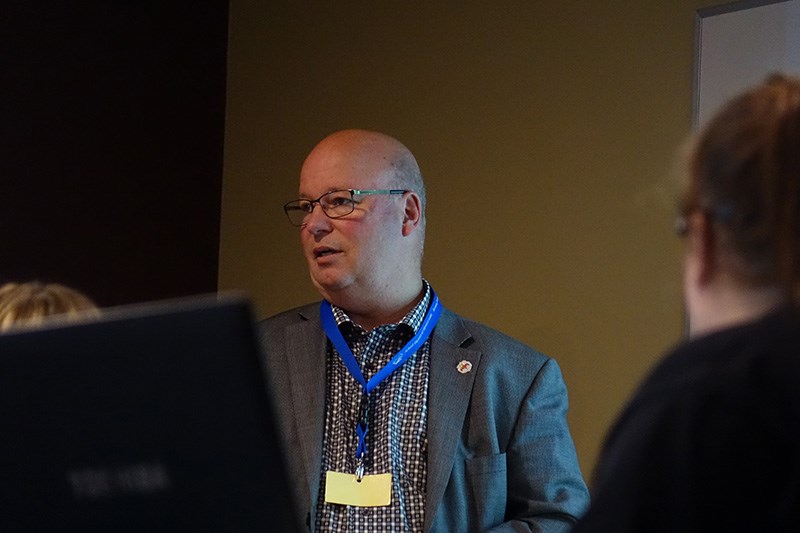Trying to boost attendance over the province’s minimum acceptable standard of 90 per cent is one way that R.D. Parker Collegiate teachers and administration are trying to improve the schools’ four-year graduation rates, which only topped 50 per cent twice in the years 2013-2017, principal Rob Fisher told the school District of Mystery Lake board of trustees Nov. 19.
Even six-year graduation rates, which show how many of the students who entered Grade 9 six years before have graduated, are below 70 per cent for the last several years. The provincial graduation rate is a bit over 80 per cent, Fisher said.
One of the most important tools in increasing graduation rates is ensuring that students are attending classes, Fisher said, noting that RDPC is consistently below the 90 per cent threshold. When attendance is below that level, it has to be reported to the provincial education department.
Missing one day of school per week is 80 per cent attendance. Ninety per cent attendance requires every student missing no more than the equivalent of two school days in a month. Seeing 300 out of 1,000 students miss at least one class a day is normal for RDPC.
One of the ways the school tries to increase attendance is by ensuring that parents and caregivers know if students are missing classes.
Automated phone and email messages are sent out every time a student misses a class without explanation.
“We know that our email hits are good,” says Fisher, meaning they are being sent to valid email addresses. “Whether people are reading the emails, we can’t tell.”
When a student has three to five absences, teachers call their parents and caregivers. If they have eight to 10 absences, counsellors, vice-principals and the principal call them in for a credit review to see how many credits they still have the ability to earn that semester.
“When a kid can no longer get the credit then they’re discontinued from the class,” Fisher says.
Another way to help ensure students are attending is to tie extracurricular activity participation to attendance and marks, though Fisher says most students in sports, band and other traditional extracurricular activities are not the ones with poor attendance. Recently, the school began offering the video game League of Legends as an inter-school sport, and some of the participants are people who had poor attendance.
“It’s a way for us to say if you want to do this, come to school more,” he said, noting that experience shows that getting Grade 9 students involved in at least one extracurricular activity, no matter what it is, improves the chances of them graduating within four years.
Specialized programs are also offered for students who can’t adapt to the regular school schedule but still want to complete high school. There is a self-directed learning program where students come in once a week and work at their own pace in between.
“It’s weak to say the best,” said Fisher. “You can imagine it’s very hard to pass that.”
There is also an off-campus mature students programs. Taking these students, who are 19 or over and have not yet graduated from high school, away from the normal school environment into a location of their own has helped more to graduate, with about 15 doing so each year for the past couple of years.
Helping Grade 8 students transition into high school is also a key to their future success. Grade 7 practical arts classes now have a mix of students from at least two schools so that they will know more people when they begin high school two years later and orientation activities are designed to make adjusting to high school easier.
“I think we’re doing a pretty good job of welcoming on the first day of school,” Fisher said.
One of the toughest classes for Grade 9 students to pass is math.
“That course is content heavier than some others,” said Fisher, because it has to provide foundational skills for students who want to move on to essentials math in later years or into harder courses like pre-calculus.
Another way the school is trying to boost graduating rates is through helping students acquire credits, whether from courses they are currently in or ones they have failed or not completed. The more credits a student earns in Grade 9, the likelier they are to graduate on time. For those who have failed courses, the school offers credit recovery, in which students can complete modules they missed the first time around and, if successful, get a mark of 51 per cent upon completion.
“It at least gives them the credit so they can move on to the next level,” Fisher said.




